
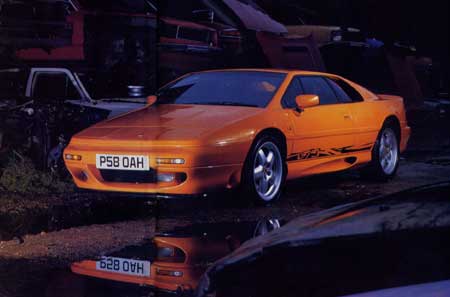
Lotus Esprit GT3
AutoCar December 1996
| MODEL TESTED GT3 | ON ROAD PRICE £39,450 |
| TOP SPEED 159mph | 30-70MPH 4.8 sec |
| 0-60MPH 4.8 sec | 60-0MPH 3 0 sec |
| MPG 19.9 | |
| FOR Fabulous steering and handling, eye-catching looks | AGAINST Poor brakes, cramped and antiquated cabin design |
There is an irony about the Lotus Esprit GT3. For years Lotus has been adding to its legendary mid-engined supercar. Adding power, adding cylinders, adding status – in theory. But with the GT3, it has chosen the opposite path. And thus the 'clubsport' Esprit has been born.
Lighter, less powerful, and toting half the number of cylinders of the only other Esprit now on sale, the 2.0-litre turbocharged GT3 is now the definitive cut price supercar. And although it has 'only' 240bhp compared with the V8's 349bhp, the knowledge that it cost £39,450 would be hard to ignore even if you were able to spend the £59,995 required for the V8.
Performance & Brakes
Because the GT3 is not destined for the US, Lotus has managed to carve over 100kg out of the kerbweight compared with the V8 and S4s. This is largely due to the removal of some sound insulation materials from the cabin, and a lot of the diagnostic systems required by US emissions laws from the engine bay. The result is not simply a lighter car, but a louder one too. To our ears, that's as good as it is bad.
Don't be fooled into thinking that this engine is merely a tweaked version of the old 215bhp, 2.0-litre, 16-valve turbo. It's actually a smaller version of the more recent 2.2-litre chargecooled turbo engine designed for the Italian market. Which is why the power and torque, as ever, can vary from the quoted 240bhp at 6250rpm and 216lb ft at 3750, up to anything as much as 250-260bhp, depending on the ambient temperature.
This is typical of chargecooled, turbocharged Esprits. In cold weather you can get momentary bursts of unusually savage acceleration when the boost pressure rises to almost one bar. In normal circumstances, it hovers around 0.75 bar, dishing out big but not immense chunks of acceleration. Unlike the V8, which feels almost uncomfortably quick sometimes.
The result is an extremely raw and peculiarly intoxicating style of delivery. The was the turbo suffers from lag below 2500rpm, then comes in with a rush at 3500rpm, boosting even more strongly at 5700-5800rpm is a far cry from today's virtually lag free light pressure turbo engines. It's a strangely exciting experience all the same. You have to measure throttle inputs accurately on the way out of bends, opening the taps as much as a second sooner than you would in normally aspirated cars of similar performance. Judged correctly, however, it's an immensely satisfying technique.
Were the GT3's gearbox less recalcitrant going from second to third and from fourth to fifth (or vice versa in either place) it would be no problem keeping the motor stoked in its optimum 3500-7200rpm rev band. On the other hand, compared with the V8's notchy gearchange, the GT3's lighter, faster shift is almost a delight.
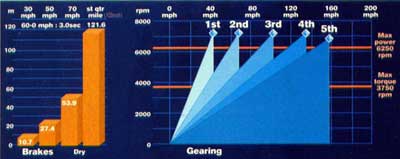
As are the figures that spewed out of the test gear. Esprits always get off the line well, the GT3 rocketing to 30mph in a scorching 1.8 sec. But it's the 4.8 sec 30-70mph times that really set the cat among the pigeons. In each case the GT3 is only fractionally slower than the old 285bhp S4s (4.7/12.1/4.7sec). Even the V8 doesn't put more than a few lengths between them with equivalent times of 4.2/10.3 and 4.0sec. The fact that the GT3 runs out of puff at a mere 159mph as opposed to 162mph for the S4s and 172mph for the V8 makes little or no difference in this country.
So it's all the more a pity that Lotus, depite the GT3's weight savings, still hasn't managed to come up with a truly decent set of brakes. As always the anti-lock triggers too readily and disengages too slowly on rough surfaces, while pedal feel and all out stopping ability remain at best mediocre.
Laggy delivery is strangely addictive, not so the poor gearshift and brakes
Design & Engineering
Recognise the formula? Strip all the heavy, performance-sapping, luxuries from a slow-selling or outdated sports car. Add Day-Glo paint, garish door graphics, a spartan interior, thinly-padded composite racing seats and an evocative motorsport-inspired name.
Conceptually, the Esprit GT3 is identical to Porsche's 968 Club Sport or Lamborghini's Diablo SV. In engineering terms, that means little more than a new permutation of old parts.
Power, for example, comes from the familiar turbocharged Lotus slant-four. But its capacity has been reduced to the original 1973cc of the very first naturally aspirated Esprit. (Officially this engine was chosen to placate customers who paid significantly more for the last of the 2.2-litre S4s' – but factory insiders say clearing stock of unsold Italian-spec 2-litre engines is the real reason.)
Externally, it loses the S4s' rear wing and 18in OZ Racing split-rim alloys, while air-conditioning, plush seats, airbags, sound deadening and hi-fi have all been ditched from the cabin (although not from the options list). Total weight saving is officially 150kg compared with the V8, 106kg according to our scales.
Otherwise, the GT3 is pure S4s. Identical from its zinc-coated steel backbone chassis, composite body and double-wishbone suspension, to its power-assisted rack and pinion steering and Brembo brakes.
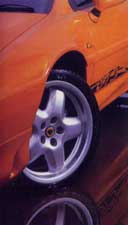
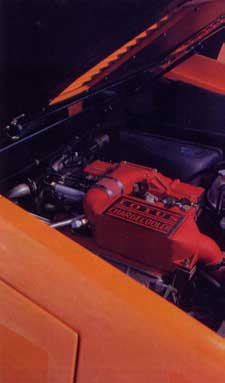
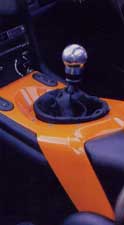
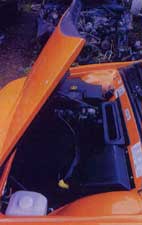
In fact, boy-racer graphics apart, the GT3 is actually better looking than the S4s. Narrower S4-spec 17in alloy wheels and bespoke Goodyear GSA rubber mean there's no need for clumsy wheel-arch extensions, and its rear and side profiles (if not its aerodynamics) benefit immeasurably from the loss of the rear wing. Even the bright orange paint of the test car looks good, although the classier metallic silver option might be a safer bet in the long run.
Of course, like all Esprits, the GT3 still suffers from poor panel gaps and questionable build integrity compared with its metal-bodied rivals: there was a squeaky rear spring and a rattly door on this 4000-mile example. But it is more durable than it feels, and much easier to forgive at this price.
Inside, the GT3 is sparse but not naked and, as a result, is rather more appealing than the gadget-packed high-spec versions. The Sport 300 seats, doors and dashboard are all trimmed in functional dark-grey vinyl and synthetic 'alcantara' suede, which flatters the build quality and helps to disguise the ugly plastic door handles and ancient eyeball air-vents. This fails, however, to disguise the fundamental space and packaging flaws of the Esprit.
A very effective rummage through the parts bin, but the cabin needs updating.
Economy
Given the less sophisticated origins of the GT3's 2.0-litre engine and the smaller brain of its Delco management system (compared with the more complex Lotus-designed system of the V8), it would be fair to expect a small drop in economy, as well as a drop in power. Not a bit of it. We drove the GT3 as hard as its maker intended for 1100 miles, yet its consumption emerged at a creditable 19.9mpg, well ahead of the V8's 16.5mpg. We saw broadly the same improvement over our touring route, where it managed 24.7mpg against 22.1mpg for the V8.
But it's what happens when you sit back the trundle along a motorway that highlights the real difference in economy between four and eight-cylinder Esprits. In spite of its shorter overall gearing – 23.1mph/1000rpm in top instead of 25.5 – the GT3 consistently puts 2-3 more miles under its tyres than the thirstier V8. That's because its bigger turbo lies almost dormant at 80-85mph; not so the V8's.
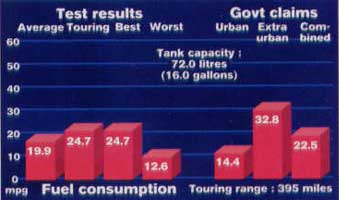
20mpg overall is a fine result for a 160mph supercar: improves on thirsty V8.
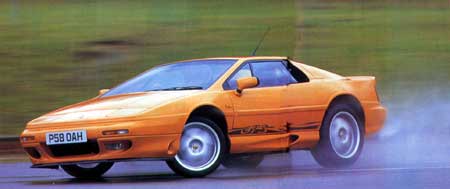
Handling & Ride
Ever since Lotus equipped the Esprit with power steering, back in 1993, it has handled, steered and cornered beautifully; but never more so than this. Perhaps by luck, but more we suspect through find judgement, when tuning the steel backbone chassis and its wishbone/coil spring suspension, the Lotus engineers have surpassed themselves with this one by creating the friendliest, most predictable and, we think, best-handling Esprit ever. A car which, even in the pouring rain, can be driven quickly and securely without requiring huge amounts of skill or commitment from a driver, the true marker of a car that handles. Rather than just grips.
Best off all is the power steering, which manages to combine a lightness of touch with a feel and precision that is equalled by no other car save Lotus's own Elise. But supporting roles played by the absorbent ride, crisp body control, well-judged roll control and iron resistance to pitch and dive under acceleration and braking are all unusually strong, even for an Esprit.
Indeed, without back to back comparison between this car and the all-conquering Elise, we would not like to say which we would actually prefer from a pure handling viewpoint.
Where it fails to match its smaller brother is on ride quality, particularly at slow speeds over pockmarked surfaces. Although it's a more comfortable car than most mid-engined supercars (bar the fine-riding Ferrari F355) the Esprit thumps and crunches its way into and out of ruts that the softer Elise casts arrogantly aside. It's also quite a noisily riding car, the big(ish) 245/45 ZR17 Goodyear GSA Eagle rear covers relaying a fair bit of rumble and roar over coarse tarmac. But when the trade off is this delightful when the road opens out, the GT3's noisy ride is easier to forgive.
Chassis is friendly and very communicative, despite and loud ride.
Market & Finance
A dealer said it all when he told us that most of his Esprit V8s and S4s sell to company buyers. When private people aren't buying, you wonder whether a car isn't just too expensive. Inevitably, confirmation follows on the used market, where Esprits take a pounding.
So, enter the GT3, an Esprit whose £39,450 price better reflects private buyers' view of the car. It should win a few sporting souls from the £37,000 TVR Cerbera and £37,460 BMW M3 coupe. It may even reward them with 30 per cent first-year depreciation, compared with the V8 and S4s at around 40 per cent. And they'll certainly appreciate its two-year warranty.
Better buy than other Esprits but the GT3 is no £20,000 Elise.

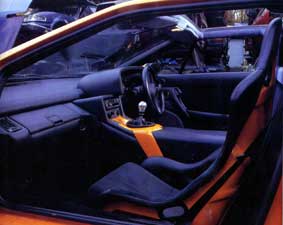
Comfort Equipment & Safety
Don't think of the GT3 as a stripped out, pared to the bone racer inside. True, Lotus has chucked out a fair bit of sound deadening material compared with the S4s, and the seats are racing style Recaro buckets rather than the usual leather covered recliners. But by no means does the cabin feel sparse or compromised alongside other Esprits. In fact, the seats themselves are fabulously supportive, if a little hard on long journeys. And you can even specify air conditioning for an extra £1185 (fitted to this car).
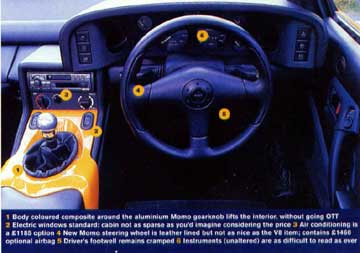
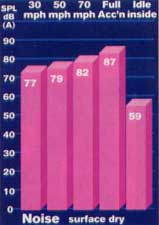
Which makes it all the more difficult to see where Lotus has shaved the money out of this car. There's even a beautiful piece of body coloured composite surrounding the aluminium Momo gearlever that looks as if someone's melted down a section of the rear wing and spilled it like hot wax all over the transmission tunnel. The only evidence of penny pinching we found was a single rather than twin fuel filler release mechanism and a slightly cheaper but still leather covered Momo steering wheel. And to the fact that the (fairly crummy) Alpine stereo now appears on the options list. In the V8 you get a superior Clarion system with a CD autochanger as standard.
Surprisingly civilised compared with pricier Esprits the GT3 may be, but it still suffers from most of the usual idiosyncrasies. The footwell remains as cramped as ever, while the screen reflections at night, poor direction of ventilation on the passenger side and absence of any real head room still serve as reminders of the car's age. As does the lack of a passenger airbag option. But at least you get a fraction more head room than normal with the thinner bucket seats. Rear visibility is improved too, because the surfboard rear spoiler has been ditched.
Not as bare as you'd expect inside, but cabin design remains badly flawed.

The Autocar Verdict
Lotus must have thought unusually long and hard before showing the GT3 a green light. Imagine the debate that ensued when the engineers came back with a car that isn't just cheaper and more economical than the V8 but also one that, in a variety of ways, is simply more fun to drive. More Lotus.
But given the go ahead it was. Presumably Lotus considered the scenario of customers turning away from the faster and cylindrically more prestigious V8 and opting for a GT3. They must have ignored it on the grounds that anyone with £60,000 to spend isn't likely to trade down to a £40,000 car with half the number of cylinders, a good deal less visual drama and not as much straight-line performance. Placed in such a formal context it's difficult not to see the distinction, we admit.
In practice, however, things are rarely so simple. The fact is that the GT3 is better balanced, louder, more agile and, critically, more engaging to drive than any other Esprit save, perhaps, the limited edition Sport 300 of a few years back. And when the argument comes down to sheer performance, you'll not find too many complaining about the car's sub five second 0-60mph, 160mph potential. Truth be told, the Esprit starts to feel a bit uncomfortable with it's made to go much quicker than this.
Which makes the GT3 something of a double-edged sword for Lotus. On the one hand, Hethel has come up with what we feel is the best ever interpretation of its legendary mid-engined supercar. By subjecting it to the lightweight 'clubsport' treatment Lotus has gone back to its roots and created an absolute belter of a driver's car, a genuine big brother of the pared-to-the-bone Elise. On the other hand, there's no getting away from the fact that this car makes the V8 seem at best a rather expensive and not much swifter alternative to the main chance, and at worst obsolete.
If the GT3 remains imperfect, it does so because of only two things: its brakes, and the age and design of its interior. As an overall prospect, though, there aren't many other reasons not to be extremely excited about this car. If you're in the market for a £40,000-£60,000 mid-engined supercar, this is the only direction in which to look.
The most accessible Esprit in history.


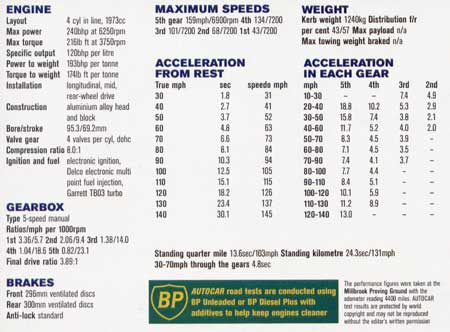
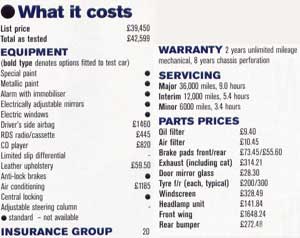
|
|